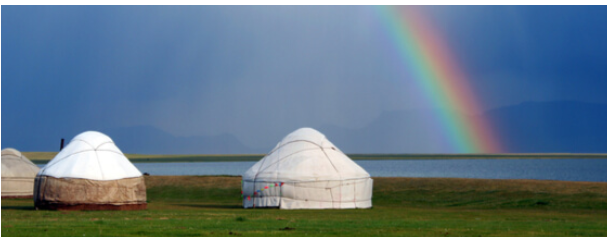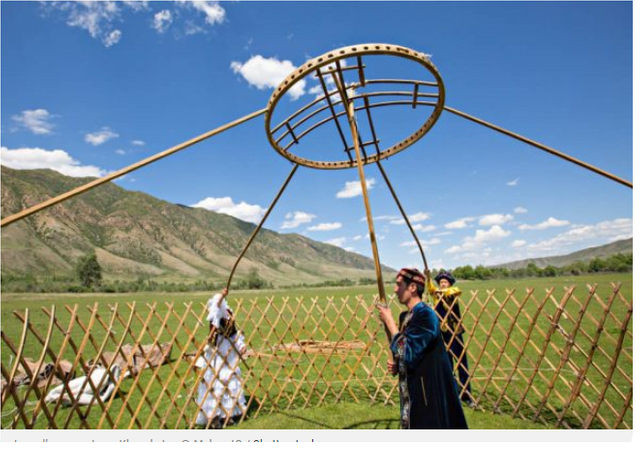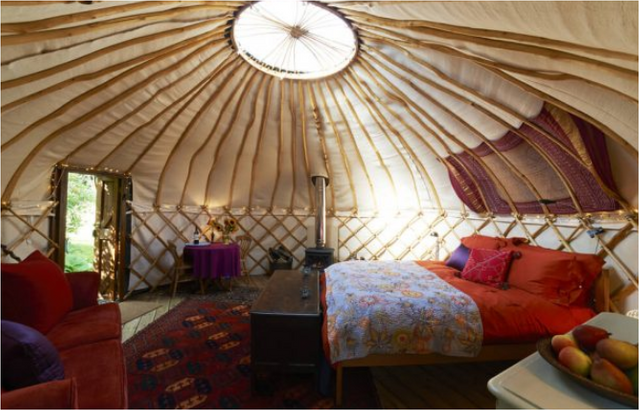The yurt, for eco stays and ... unusual!
Composed of animal and wood hairs, the yurt is a 100% natural tent used as habitat especially in Central Asia. Mountable and removable in just a few hours, the yurt is both sturdy, lighter than a caravan, and can be moved without problems.
Traditional home of the steppes of Central Asia, the yurt made its appearance 2000 years ago. This is not a new concept, and yet the yurt is increasingly sought at the expense of other mobile habitats.
The yurt, ecological habitat par excellence
Listed as a World Heritage Site by UNESCO, the yurt is a circular tent made of felt, made from animal hair, and wood, which are entirely recyclable and natural materials.
Mountable and removable in a few hours, the yurt is both solid, lighter than a caravan, and can be easily moved.
The yurt consists of assembling pieces of wood:
The walls (khana) which are larch trellises assembled with each other with ropes horsehair to form the tower of the yurt.
The poles (uhn) and the central crown (Toono), which allow to make the roof.
The door (khalra).
This temporary natural habitat promises comfort, insulation, and turns out to be a modern housing since it can be equipped including sanitary (dry toilets, obviously!), But also a bathroom (equipped with solar collectors for the hot water) ... ideal for holidays.
It can serve as an extension to the house, residence time for holidays, playroom for children, guest room, outdoor lounge ...
The yurt, an alternative habitat
Moreover, its price is very attractive since the yurt is 10 times less expensive than a mobile home with an equivalent surface. Quick to heat (a wood stove with slow combustion is de rigueur) and very resistant to the weather, the yurt as alternative habitat seduces more and more Westerners.
Several manufacturers offer people looking for a green home different models of yurts, with or without a mezzanine and can be delivered as a kit or turnkey.
So, a yurt as a vacation rental to ensure a change of scenery in the heart of our beautiful regions, what do you think?
The yurt is designed to withstand harsh polar winters, high winds, heavy rain and overwhelming heat.
About the yurt
Since 1 July 2015, yurts have the legal status of "Removable Residences constituting the permanent habitat of their users". A classic yurt, exclusively covered with canvas, without connection to collective networks, with toilets outside, and used less than 8 months per year, can be likened to a tent or a tent, and is allowed everywhere the campsite is not forbidden.
On the other hand, contemporary yurts (which are similar to an ecological construction) or with an area greater than 35m3, often require permits or permits. Find out before you consider climbing one in your garden!
thanks for reading



Nice read. I leave an upvote for this article thumbsup